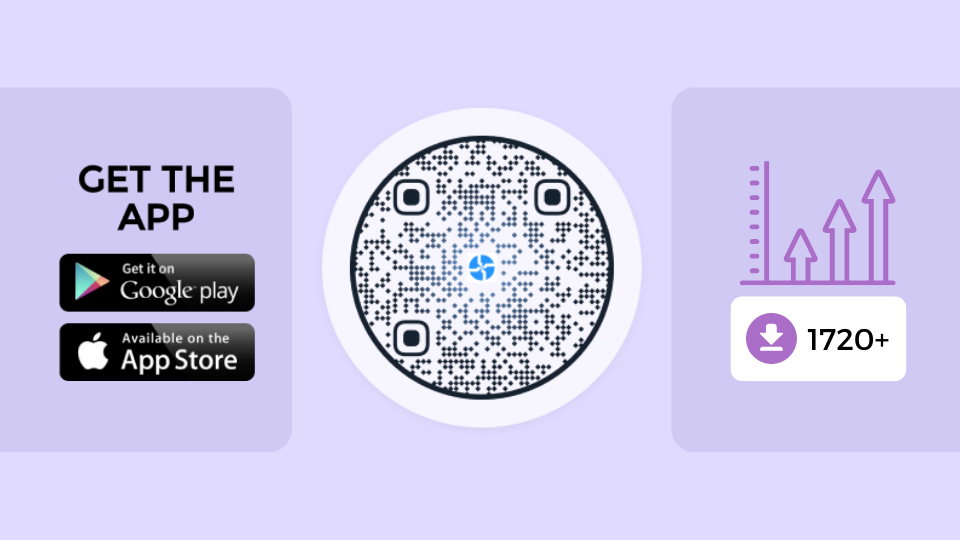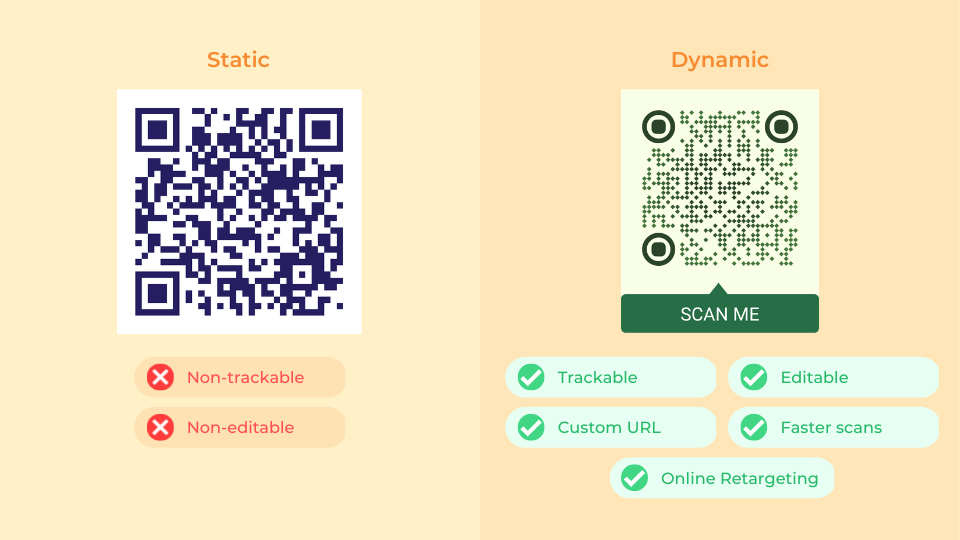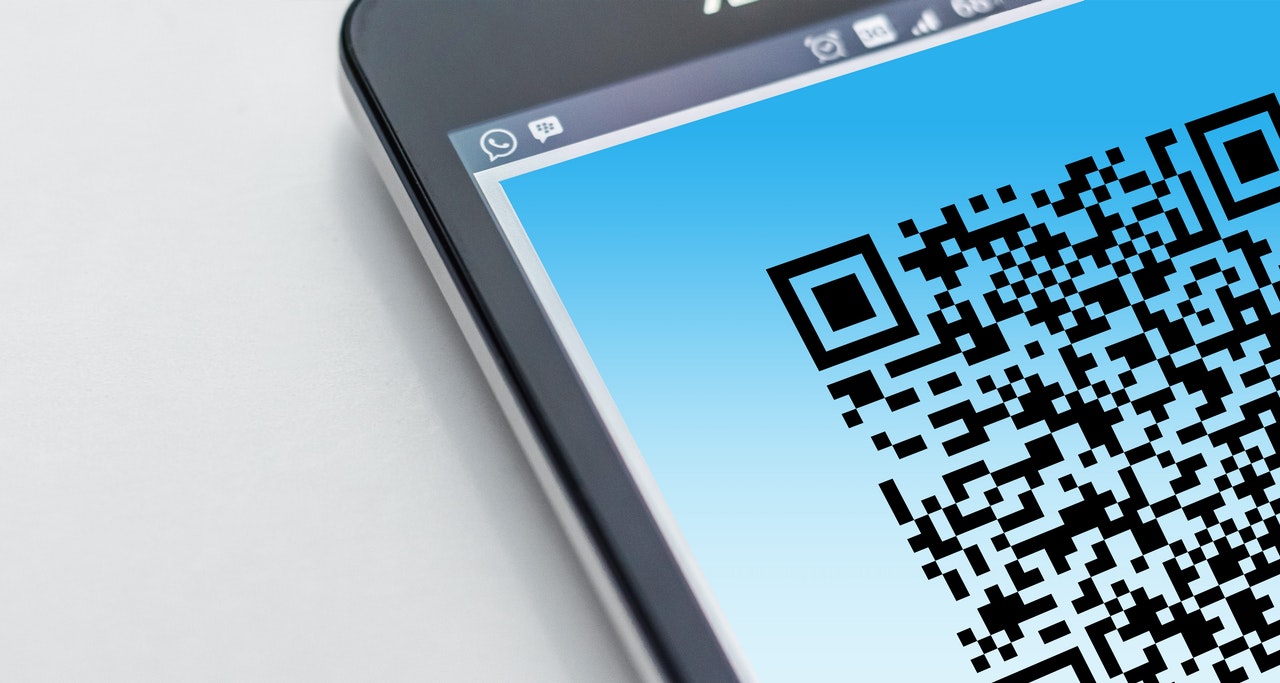6 Reasons to Use QR Codes to Boost Your App Downloads
There’s no shortage of competition in the app marketplace. You’ll find dozens of apps vying for the same audience’s attention. And that’s regardless of which major app store you go to. Luckily, with some good strategies, your app can get ahead and attract your ideal download count.
Quick Links
Now, there are plenty of ways to market an app. You can use SEO, ASO, paid ads, social media, or even influencers. You can even combine all of these into one ultimate app marketing strategy. But there’s probably one more effective avenue you’ve yet to consider: QR Code marketing.
Using a QR Code to download apps isn’t a new thing. I’m sure you’ve already seen one of those posters with a QR Code prompting onlookers to grab a quick app download. You might’ve even downloaded an app via a QR Code yourself. Deciding whether to have a QR Code really depends on your brand and what you want to achieve with it. You should think about whether you will be spending the right money or wasting it. Your QR Code has to be considered a success, so you need it to exceed your expectations.
This article will cover everything you need to know about using QR Codes to get your app known, drive downloads, and push it up the top charts.
What is an app download QR Code?

An app download QR Code is just as it sounds, a QR Code linked to an app download page. If you’ve recently submitted your app to an app store, or even multiple app stores, you could easily connect it to a QR Code.
QR Codes are effective bridges to any online destination, providing a frictionless, unintrusive way of marketing a product. Since everyone owns a smartphone these days, a quick split-second scan with your camera shouldn’t be too hard.
How do app download QR Codes work?
The app download QR Code cycle only consists of 4 simple steps:
- Create an app download QR Code using a free or paid QR Code solution.
- A user will scan the QR Code using any modern-day mobile device.
- The QR Code will then take the user to the app download page in the app store.
- If you’re using dynamic QR Codes, it will identify the user’s mobile OS and redirect them to their phone’s native app store.
It’s worth mentioning that QR Codes come in two types: static and dynamic. The one you choose should depend entirely on the complexity of your app marketing campaign.
Static vs. Dynamic QR Codes: Which to choose for your app marketing
Perhaps the most apparent distinction between static and dynamic QR Codes is editability. You can’t change static QR Code data once you create them. Dynamic QR Codes, however, allow for unlimited data modifications. You can edit these variants as often as needed.
Even if you change your mind about where your QR Codes should take your scanners, you can easily make the necessary content switch. But editability isn’t the only difference between static and dynamic QRs. Here’s a quick rundown of their differences in terms of features:

6 reasons to use QR Codes to promote your apps
Let’s look at some of the obvious advantages of incorporating dynamic QR Codes for app marketing.
1. Enjoy limitless placement potential
QR Codes can grace any type of physical media, whether that’s a wall-painted poster, a billboard, a magazine page, or a product’s packaging.
Let’s say you own a coffee chain and have recently launched a customer reward app. You can easily prompt users to download your app through QR Codes on ad placements across your locations. You can even put QR Codes in your disposable coffee cups, like what Starbucks has been doing for quite some time.
2. Provide seamless accessibility
Here’s the traditional way of using print media to drive app downloads:
Your audience sees your poster, which piques their interest to download your app. But, chances are, at that moment, other things compete for their attention. Your potential scanner may be in a hurry or talking to a friend.
If you don’t offer a way for an interested audience to do a quick download, they might attempt to remember your app so they can get back to it when it’s convenient.
We all know that once an audience leaves a touchpoint without taking action, the odds of them returning are relatively low.
If they’re really interested, they might do a quick search on their app store, only to be presented with a handful of other alternatives to the one you offer.
Now, imagine placing a QR Code on the same poster. Instead of remembering your app or searching for it on the app store, your audience can just do a quick scan that takes them directly to your download button.
3. Make changes on the fly
If you’re using dynamic QR Codes, you’ll have access to unlimited content edits. Here’s what I mean: Let’s say you’ve managed to get customers to scan a QR Code to download an app that lets them make purchases from your online store.
After hitting your app download conversion target, you’ve decided to launch a rewards program app to encourage customer loyalty. So instead of printing another batch of posters or packaging with a new QR Code, you can simply edit the content of your existing ones already displayed on your prints.
All you have to do is to change their destination. Instead of linking to your main B2C app, your QR Codes will now be redirected to your newly launched rewards app. Remember that redirecting an existing QR Code to a new destination is only possible with dynamic QR Codes.
4. Track your QR Codes for analytics
Trackability is another helpful feature you can leverage with dynamic QR Codes. As you know, data tracking provides you with many insights into your target audience.
Each QR Code you display can capture data such as scan time and date, location, and scanning device. If you’re using a custom QR Code platform, see if you have the option to integrate your QR Codes with Google Analytics.
This integration gives you a broader set of data to track. Among these are user behavior, demographics, and the ability to tell new scanners from returning ones. You can use these insights to create meaningful metrics and optimize your app marketing efforts.
5. Offer a single entry point for every app store
Publishing on both major app marketplaces can be beneficial if you’re after the most reach. After all, your target audience isn’t limited to Google Play or Apple’s App Store. But, as you might think, this can pose an issue for your QR Code marketing.
You want to make it as seamless as possible for your audience to use QR Codes to download your app. Placing two QR Codes on your prints, one for each app store, isn’t going to help. To prevent this issue, you can use an all-in-one app download QR Code that you can link to both app stores.
It’s up to the QR Code to identify your scanner’s smartphone operating system so it can redirect them to their native app marketplace.
6. Gain access to many valuable QR Code features
You can always create static QR Codes for free. But once they’re live, there’s really not much you can do apart from waiting for scans and app downloads. Static QR Codes are neither editable nor trackable.
Dynamic QR Codes, on the other hand, are the exact opposite. They provide unlimited edits and are capable of being tracked.
Still, regardless of which QR Code solution you choose, dynamic QR Codes come with paid plans. But once you gain access to them, they offer tons of valuable features that can help you in your app marketing.
These QR Code variants let you incorporate retargeting into your campaigns. You can also access other elements like automation and app integration to improve your team’s collaboration and productivity.
Where can you use QR Codes to promote app downloads?
Now that you know how QR Codes can help your app marketing, you probably want to give them a try. To help you get started, I’ve laid down some ideas you can use for getting your app download QR Codes out there, ready to attract users.
1. On print media
As mentioned, there’s no stopping you from placing QR Codes on any print media. These could be anything from posters, billboards, newspapers, or magazine pages. The potential placement you get with print is boundless.
Let’s say you decided to buy an ad page from a magazine frequented by your target audience. Upon seeing your ad, the copy may compel a reader to want to download your app. Have a QR Code as your actionable CTA to help readers take action then and there.
2. On social media
You can also share your QR Codes on your social media posts, pages, and ads. This technique is helpful since not all users browse social media using their phones. So apart from including a clickable link, you can also give your audience the option to download via a phone camera scan.
3. On email newsletters
Email marketing, on average, rakes in a 200% ROI. It remains one of the best tools for customer acquisition and retention because of its frequency and potential for reach. Email marketing could very well be a crucial aspect of your app marketing strategy.
QR Codes can also serve as your email newsletter’s call to action. And if you pair your newsletter with an enticing offer like a coupon or an in-app discount, you might just encourage more people on your email list to download your app.
QR Codes can complement any app marketing strategy
The use cases I’ve mentioned above are just a tiny fraction of the vast array of known QR Code applications. As competition for app attention heats up, you can stay ahead of the fold with a powerful strategy for reach, awareness, and acquisition.
QR Codes streamline the entire app marketing process, from discovery all the way to conversion. Going dynamic is the way to go if you want to take full advantage of what QR Codes have to offer.
How to Use AI-Powered SEO Tools for WordPress eCommerce
SEO is a critical factor in the success of any e-commerce WordPress store. As competition…
0 Comments11 Minutes
Why Short-Form Videos Are the Future of Content Marketing
Your Instagram customers spend over 50% of their time watching short-form videos and reels. Rather…
0 Comments12 Minutes
The Role of Digital Marketing in Business Growth
Online marketing touches every aspect of a business, whether it is initiating the idea or for an…
0 Comments3 Minutes
AI Meets Authenticity: Balancing Automation and Human Touch in Content Marketing
Is your brand starting to sound like a robot? In a world where algorithms write faster than any…
0 Comments8 Minutes
Essential Tools for Enhancing Web Design and UX Hosting
Have you ever visited a website that felt slow, clunky, or confusing? A website that is poorly…
0 Comments11 Minutes
How a Mini Cart Transformed My Store’s Shopping Experience
Okay, real talk—running an online store is hard. You think you’ve got everything figured out, you…
0 Comments9 Minutes
Balancing Your Security Initiatives With Industry Compliance Requirements
Managing a business today comes with a number of daily battles that need to be fought. Resources…
0 Comments11 Minutes
Best plugins to enhance the customer shopping experience
Customer experience is a key part of every online store. A good experience helps customers find…
0 Comments7 Minutes








